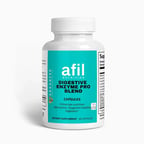Escarole
Escarole is a nutritious leafy green that may cause intolerance due to inulin, polyphenols, or histamine reactions. Avoid it for 8 weeks, explore milder greens, and use supplements like digestive enzymes and probiotics for support.
🥬 What is Escarole?
Escarole is a versatile leafy green from the chicory family, related to endive and radicchio. Known for its broad, curly leaves and mildly bitter taste, it is a nutrient-dense food, offering fiber, vitamins A, C, and K, as well as potassium and folate. Its bitterness mellows when cooked, making it popular in soups, stews, or sautéed dishes.
🤔 Why Do I Have an Intolerance to Escarole?
Escarole intolerance can stem from several factors, including sensitivities to its natural compounds:
- Inulin (prebiotic fiber): Found in high levels in escarole, inulin ferments in the gut, which can cause bloating, gas, or discomfort in those with sensitive digestion or irritable bowel syndrome (IBS).
- Polyphenols: These beneficial antioxidants may irritate the digestive tract of those with existing sensitivities, leading to mild inflammation or discomfort.
- Histamine-related reactions: Escarole may release or contribute to histamine production in the body, causing symptoms in individuals with histamine intolerance.
- Bitter compounds: Its natural bitterness comes from sesquiterpene lactones, which can be harder to tolerate for sensitive individuals.
🛠️ What Can I Do About It?
Managing your intolerance to escarole involves dietary adjustments and supportive strategies:
- Eliminate escarole for 8 weeks: Avoid consuming it to reduce inflammation and give your body time to reset.
- Monitor your fiber intake: High-fiber foods like escarole may irritate sensitive digestion; try reducing other similar fibers.
- Choose milder greens: Replace escarole with more tolerable greens like spinach or romaine during this period.
- Reintroduce gradually: After 8 weeks, slowly incorporate small amounts of escarole to assess your tolerance.
- Prepare it differently: Cooking escarole can reduce bitterness and make it easier to digest compared to eating it raw.
💊 Which Supplements Do You Recommend for Intolerance and Inflammation from Escarole?
Supplements can help manage symptoms and promote gut healing:
- Digestive enzymes: Support breaking down fibrous compounds like inulin.

- Probiotics: Improve gut microbiota and help reduce inulin-related bloating.

- Quercetin: A natural anti-inflammatory that can help with histamine-related symptoms.

- L-glutamine: Supports gut lining repair and reduces intestinal sensitivity.

- Magnesium: Aids digestion and can relieve discomfort from bloating or gas.

🌟 Why Might I Have an Intolerance to Escarole but Not Other Vegetables?
Escarole's unique compounds may explain why you tolerate other vegetables but not this leafy green:
- Inulin concentration: Escarole contains more inulin than many greens, which may trigger sensitivity not present with low-inulin vegetables like kale or lettuce.
- Bitter compounds: Sesquiterpene lactones are less prevalent in milder greens such as spinach or arugula.
- Histamine release: Escarole may trigger histamine reactions, unlike histamine-lowering greens like parsley.
- Fiber type: Escarole's soluble and prebiotic fibers ferment differently than the insoluble fibers found in broccoli or carrots.
🍽️ Popular Dishes with Escarole
- Escarole and bean soup
- Sautéed escarole with garlic
- Italian wedding soup
- Escarole salads
- Braised escarole
🍽️ Alternatives (if tolerated)
- Spinach
- Romaine lettuce
- Kale
- Arugula
- Swiss chard
.png?width=100&height=75&name=AFIL%20Logo%20(1).png)